Kim - Annie Laurie McDonnell
ingrid_vc so. CA zone 9
11 years ago
Featured Answer
Sort by:Oldest
Comments (49)
strawchicago z5
11 years agolast modified: 9 years agoingrid_vc so. CA zone 9
11 years agolast modified: 9 years agoRelated Discussions
My Tiny Band of Annie Laurie McDowell
Comments (27)Hi Ingrid: You got seaweed and fish emulsion? Good stuff! Check out this quote: "Seaweed fertilizers contain almost every micro-nutrient in a fully chelated (immediately available) form. They deliver a healthy dose of natural plant hormones." Annie needs LOTS OF MOISTURE. She refused to grow in full-sun for me, she kept pumping out blooms ... kept me busy pinching off blooms. Then I put her in 4 hours of weak morning zone 5a sun, gave her some acid nitrogen fertilizer to balance out my above pH 8 tap water. She went beserk with that nitrogen fertilizer Lilly Miller NPK 10-5-4 (has all micronutrients). She doubled in size in 1 month. The pot was leaching out nitrogen with our constant fall rain. That's the only instance where that acid fertilizer did any good. Annie did better when I put used lemons to bring down my tap water from 8.5 to that of rain water (pH 5.6). She will ball if rain, best to use gypsum (calcium sulfate). I posted what Burling uses for fertilizer in Alana's thread "My First Bloom". Check that out as to the problem with Osmocote that Burling uses. It might be good to shade her more with a tall chair. If you water her daily, more nitrogen will be leached. The Lilly Miller has chicken manure, so it's slow-release for the entire year ... I'm still cautious about using that stuff only for pots, and when wet. Your fish emulsion with supply the trace elements. That's better than alfalfa meal, which gunks on top. I still have alfalfa meal gunking around my bushes from late fall application. They haven't decomposed yet !! The best hole I made this year was with cocoa mulch at the bottom, NPK 2.5-1-3, pH of 5.4, with all the trace elements. That stuff decomposed fast in my wet clay, it retains moisture better than peat moss. You would not believe the amount of earthworms in the hole .. enough for a worm farm! I grew Annie in the pot until she reached 2 gallon-root-ball, before I put her in the wettest spot in my alkaline clay. Annie survived my zone 5a winter, now with many green branches & basal breaks. This post was edited by Strawberryhill on Fri, Apr 26, 13 at 18:11...See MoreAnnie Laurie McDowell
Comments (49)I raised the seedling in the Newhall garden. In those years (early nineties), that area experienced a one hundred degree temperature swing from summer to winter (115 - 15 F) many years. The "milder" years only swung about 80 degrees, with the extremes not quite as dramatic as the more volatile ones. Anything potted remained in the pot ghetto where MANY cans of soil shaded the can sides. I had to create shade there with plants, stacked blocks to create raised beds, and groups of potted plants. As with any "infant plant", it requires creating a "nursery" area where you can more easily regulate and control the conditions. I had that in Encino, where "winters" were not sufficient to stimulate black berries to flower and the hibiscus flowered all winter long. Summer for the past several spiked to the triple digits a few times and was frequently in the mid to high nineties. Fortunately, I could use existing plants and the shade of the house to provide more protection than I could provide in the rear (western and southern exposure) where the adult plants struggled. I would only plant things in gallons during "winter" when I knew the conditions wouldn't fry them quickly. Once it began climbing into the eighties and higher and remaining there, two, three and five gallon cans were the rule for most plants. It takes a lot longer to completely overheat two and more gallons of damp soil than it does a gallon. Even here, where it has seldom exceeded the low eighties, I have to shield smaller pots from the intensity of the blistering sun. The air and wind are cool, but that sun is brutal and it fries things VERY quickly....See MoreAnnie Laurie McDowell is beautiful!
Comments (131)Yes, I realize I am going to need both patience and perseverance with these babies, but I'm ok with that! All good things take time, energy and lots of loving attention. I am one of those gardeners who enjoy the process nearly as much as the results and often choose starting from seeds or cuttings even when other options are available. Thanks again, all of you for your helpful suggestions. (I don't know why profile still doesn't show my location and zone. I updated it last night.)...See MoreWho has Annie Laurie McDowell in SoCal?
Comments (61)@purilisaVA-zone7B you're welcome! Don't forget Renae, ALmD's parent. It is also wonderfully shade tolerant, continuous-flowering, remarkably well scented and a gorgeous thing. Renae was the sister of the man in Visalia who owned the drug store. She passed from cancer in the early forties. Mr. Moore named the rose to memorialize her. ALmD inherited her slow-to-start from Renae as well as her lack of prickles, tolerance for shade and delicious scent. Another of Mr. Moore's marvels without prickles is Climbing Yellow Sweetheart. It's also remarkably well scented and a gorgeous thing. Its remarkable story is presented on HMF, written by the late and continuously missed, Jim Delahanty (jimofshermanoaks) and me: "What Was Lost is Found". The rose can be found here. https://www.helpmefind.com/rose/l.php?l=2.23069 Our article, documenting the resurrection of this desirable rose is here. https://www.helpmefind.com/gardening/l.php?l=66.587...See Morejerijen
11 years agolast modified: 9 years agoroseseek
11 years agolast modified: 9 years agoingrid_vc so. CA zone 9
11 years agolast modified: 9 years agoroseseek
11 years agolast modified: 9 years agofogrose
11 years agolast modified: 9 years agoroseseek
11 years agolast modified: 9 years agoingrid_vc so. CA zone 9
11 years agolast modified: 9 years agoroseseek
11 years agolast modified: 9 years agofogrose
11 years agolast modified: 9 years agoroseseek
11 years agolast modified: 9 years agofogrose
11 years agolast modified: 9 years agoroseseek
11 years agolast modified: 9 years agoingrid_vc so. CA zone 9
11 years agolast modified: 9 years agoroseseek
11 years agolast modified: 9 years agostrawchicago z5
11 years agolast modified: 9 years agofogrose
11 years agolast modified: 9 years agoroseseek
11 years agolast modified: 9 years agoKippy
11 years agolast modified: 9 years agobart_2010
11 years agolast modified: 9 years agostrawchicago z5
11 years agolast modified: 9 years agoroseseek
11 years agolast modified: 9 years agoKippy
11 years agolast modified: 9 years agoKippy
11 years agolast modified: 9 years agostrawchicago z5
11 years agolast modified: 9 years agofogrose
11 years agolast modified: 9 years agoingrid_vc so. CA zone 9
11 years agolast modified: 9 years agofogrose
11 years agolast modified: 9 years agoKippy
11 years agolast modified: 9 years agostrawchicago z5
11 years agolast modified: 9 years agoroseseek
11 years agolast modified: 9 years agoKippy
11 years agolast modified: 9 years agodaisyincrete Z10? 905feet/275 metres
11 years agolast modified: 9 years agoroseseek
11 years agolast modified: 9 years agodaisyincrete Z10? 905feet/275 metres
11 years agolast modified: 9 years agoroseseek
11 years agolast modified: 9 years agostrawchicago z5
11 years agolast modified: 9 years agoingrid_vc so. CA zone 9
11 years agolast modified: 9 years agofogrose
11 years agolast modified: 9 years agostrawchicago z5
11 years agolast modified: 9 years agobart_2010
11 years agolast modified: 9 years agostrawchicago z5
11 years agolast modified: 9 years agoingrid_vc so. CA zone 9
11 years agolast modified: 9 years agofogrose
11 years agolast modified: 9 years agostrawchicago z5
11 years agolast modified: 9 years agoroseseek
11 years agolast modified: 9 years agofogrose
11 years agolast modified: 9 years ago
Related Stories
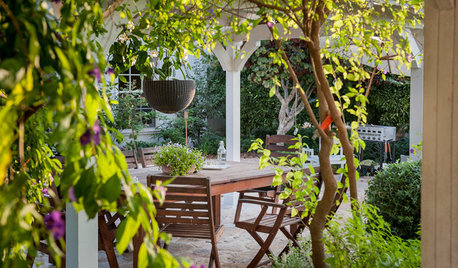
MOST POPULARUnwind With 30 Gorgeous Garden Retreats
Houzz users share their favorite spots for relaxing, meditating and spending time with family and friends
Full StorySponsored
Columbus Design-Build, Kitchen & Bath Remodeling, Historic Renovations



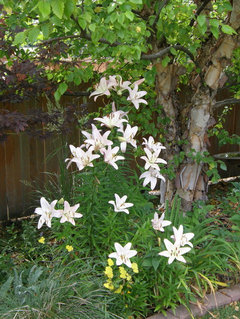
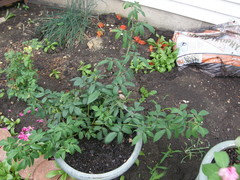



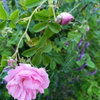
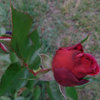

bart_2010